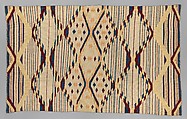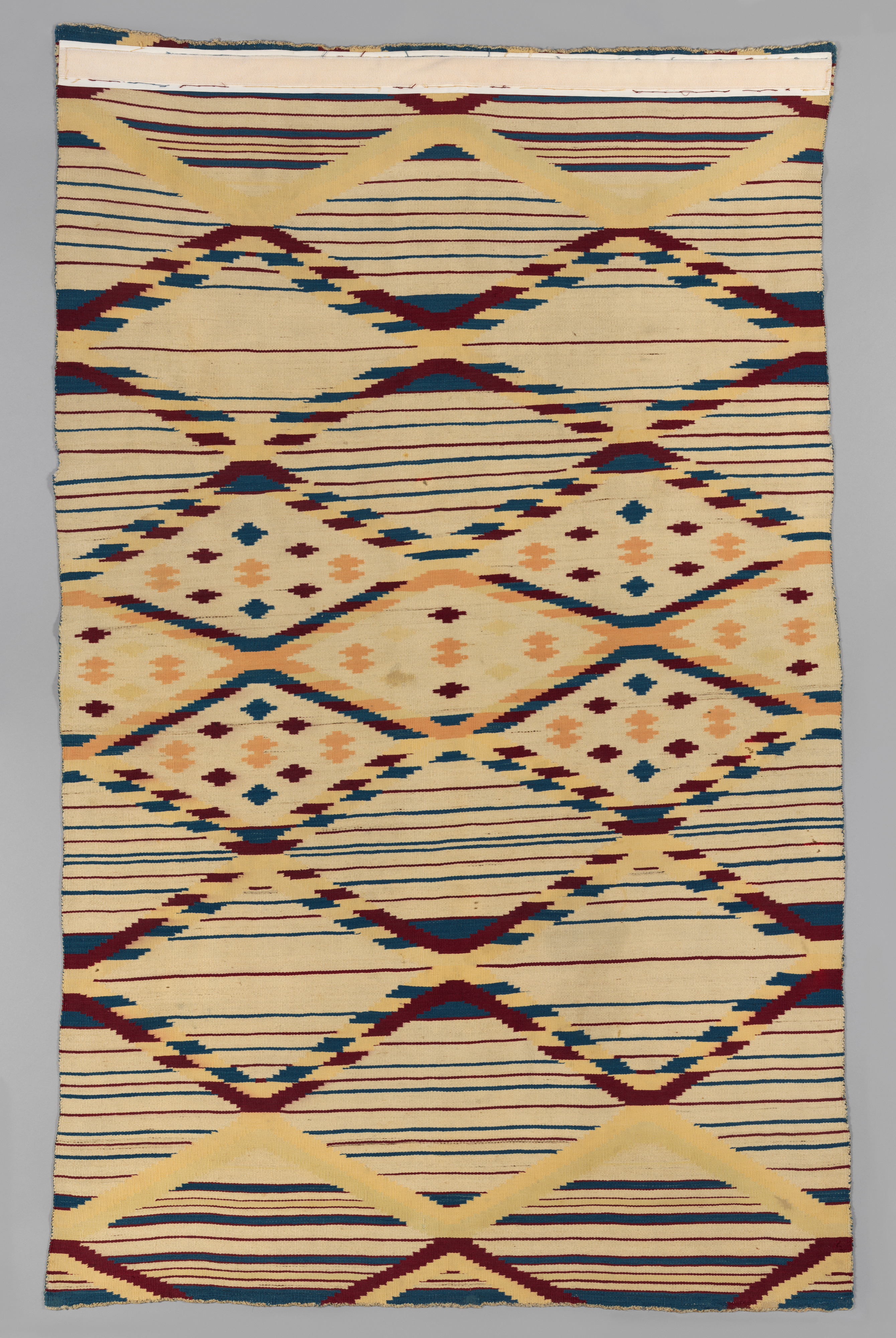Serape
Not on view
Serapes (the Spanish term for blanket) are a prominent form of Navajo weaving. Vibrantly colored and vividly patterned, these wearing blankets build on long-established design themes. Contemporary Native artists and scholars have identified this large weaving, with its unusual white background, as a "not- of-free-will" blanket—meaning it was likely produced by a highly skilled Navajo woman enslaved in a Spanish American household. An 1865 congressional report estimated that there were between 1,500 and 3,000 Navajo captives living in the Rio Grande Valley as well as in northern Mexico in these years. While this particular form of enslavement largely ended in the late 1870s, its traumatic legacy continues to reverberate today.
Due to rights restrictions, this image cannot be enlarged, viewed at full screen, or downloaded.
This artwork is meant to be viewed from right to left. Scroll left to view more.



